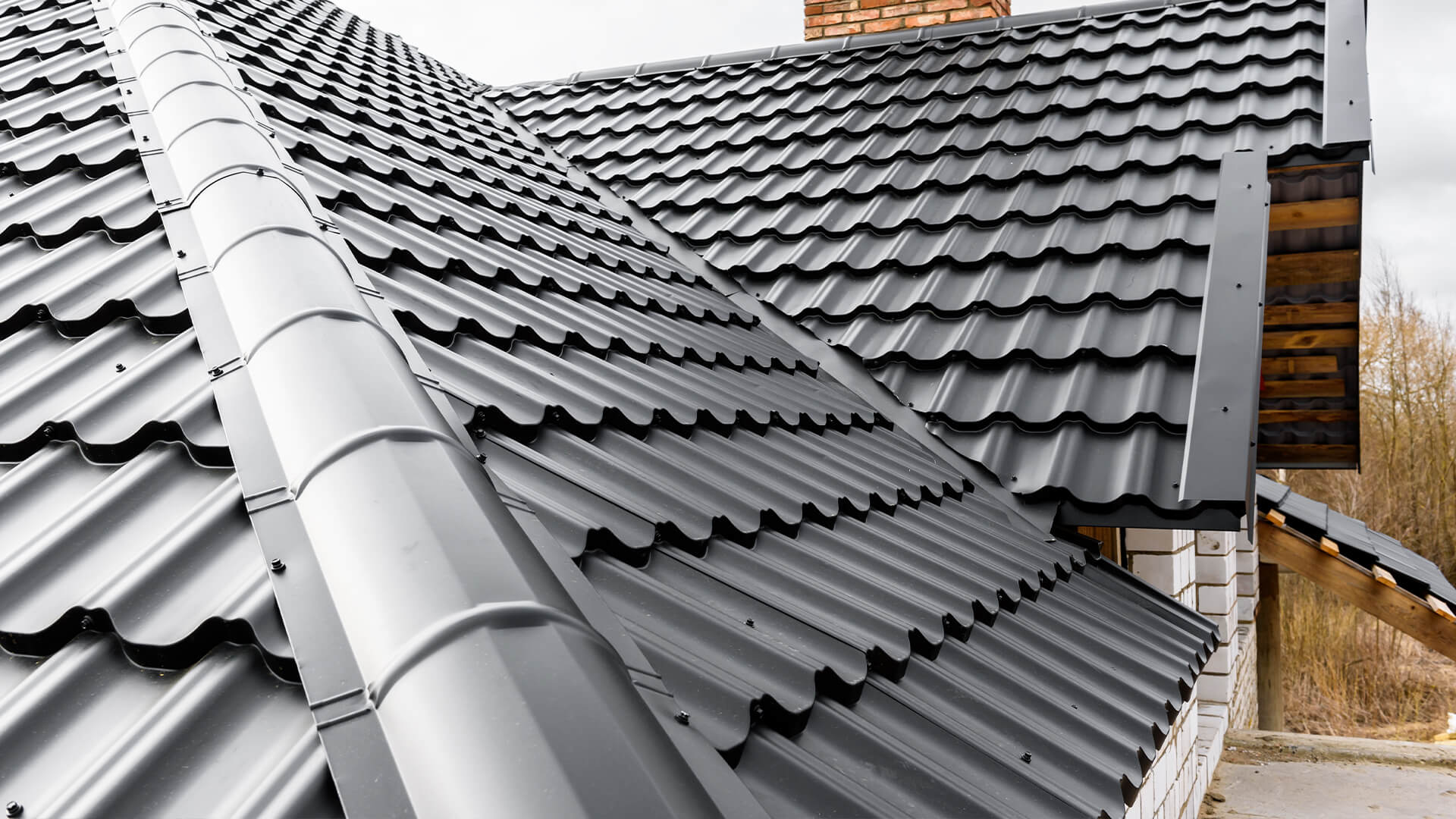Comparing Prices Among Roofing Companies in Gainesville Florida
Comparing Prices Among Roofing Companies in Gainesville Florida
Blog Article
Finest Practices for Ensuring Appropriate Roofing Ventilation
A well balanced consumption and exhaust vent proportion, commonly 1:300, plays a critical function, with consumption vents preferably put at the reduced edge of the roof for great air entry and exhaust vents at the peak for cozy air exit. Maintaining insulation away from vents is critical to avoid air flow limitation.
Understand Ventilation Fundamentals
Effectively recognizing air flow basics is vital for making certain the long life and effectiveness of roof systems. Effective ventilation minimizes wetness build-up and temperature level extremes in the attic, both of which can lead to significant architectural damage gradually. A well-ventilated roof helps in preventing usual issues such as mold development, wood rot, and ice dams, which can jeopardize the stability of the roof materials and the underlying structures.
The main goal of ventilation is to help with the motion of air, enabling a constant exchange between the outdoor and interior environments. This equilibrium is attained via a mix of intake and exhaust vents that interact to keep optimal airflow. Intake vents, typically situated along the soffits or eaves, enable fresh air to go into the attic space, while exhaust vents, frequently situated at or near the roof ridge, make it possible for hot, damp air to leave.
Key factors affecting the efficiency of roofing system ventilation include proper positioning, appropriate sizing, and making certain that both intake and exhaust vents are unblocked. Routine assessment and upkeep are vital to determine potential obstructions, damage, or inefficiencies in the air flow system, consequently protecting the roof's efficiency and longevity.
Kinds Of Roofing Vents
Roofing system vents play a crucial duty in maintaining effective attic air flow and, by expansion, the total wellness of the roofing system. Numerous sorts of roofing system vents are available, each with distinct advantages customized to particular roof requirements. Ridge vents, as an example, are set up along the roofing's peak, allowing cozy, damp air to escape from the attic. They offer continuous air flow and mix seamlessly with the roofline, making them both efficient and visually pleasing.

Soffit vents are set up under the eaves and operate in tandem with roof covering vents to make sure a well balanced intake and exhaust system. By permitting cooler air to enter from below, soffit vents facilitate the expulsion of warm air via top vents. Gable vents, located on the outside walls of the attic room, deal another efficient service, especially in homes with gable roofing systems.
Analyze Your Present Ventilation

Next, take into consideration the age and problem of your roof covering materials and air flow elements. Older systems might not adhere to current structure codes or might have weakened in time, decreasing their performance. Conduct a detailed assessment to recognize any kind of indicators next page of deterioration, such as rust, damages, or voids that could jeopardize the system's efficiency.
In addition, determine the attic temperature level and moisture degrees. Heats and humidity can indicate insufficient ventilation - gainesville roofing companies. Utilize a hygrometer and thermostat to obtain precise readings, comparing them with exterior conditions. Persistent discrepancies recommend possible concerns that require addressing.
Setup Best Practices
Reliable installation of roof covering ventilation systems is extremely important for making sure optimum performance and long life. Correct installation begins with recognizing the specific air flow demands of the roofing and the structure it covers. This includes computing the correct ratio of consumption to wear down vents, normally sticking to the 1:300 policy, which stipulates one square foot of air flow for every 300 square feet of attic room floor space.

The positioning of vents is equally vital. Intake vents must be mounted at the roof's lower side, frequently in the soffits, to permit amazing air to get in. Exhaust vents, on the various other hand, should be mounted near or at the roofing's optimal to help with the leave of warm, wet air. This develops a natural airflow that helps maintain temperature and wetness balance within the attic room.
Seal all vent connections thoroughly to avoid air leaks and possible water infiltration. Usage top quality materials and comply with manufacturer guidelines to guarantee toughness and efficiency. Additionally, integrating ridge vents with baffles can considerably boost airflow efficiency by preventing wind-driven rain and snow from entering the attic.
Ultimately, accurate installment of roofing ventilation systems mitigates possible problems such as mold growth, ice dams, and structural damage, guaranteeing the roof's stability and the building's general wellness.
Regular Upkeep Tips
Consistency in maintenance techniques is basic to making certain the lasting performance of roof covering air flow systems. Routine evaluations are crucial, preferably done biannually-- in the spring and autumn. During these examinations, ensure that vents are complimentary of particles, nests, and other obstructions that might hamper airflow. Check for any signs of dampness accumulation or mold, as these can indicate inappropriate ventilation or leakages (roofing companies in gainesville florida).
Cleaning the vents is an additional vital task. Use a soft brush or a vacuum to get rid of dust and debris from consumption and exhaust vents. Be cautious not to harm the vent screens or louvers during the procedure. Additionally, evaluate the attic room for any type of indications of water damages, which could endanger the honesty of the roof.
Proper insulation is similarly vital. Ensure that attic insulation does not obstruct the vents, as this can drastically restrict airflow. Reposition or replace it to keep a reliable obstacle. if any insulation get more has shifted or settled.
Lastly, replace any kind of harmed or missing out on parts quickly. Damaged vents, fractured shingles, or worn-out blinking can all add to poor ventilation and should be addressed immediately. Normal upkeep makes certain that the roofing ventilation system works efficiently, consequently extending the lifespan of the roofing system itself.
Verdict
Making certain correct roofing air flow is vital for preserving the efficiency and resilience of a roof system. Adherence to the 1:300 consumption and exhaust vent ratio, combined with the calculated positioning of vents, is essential. Routine semiannual assessments, debris cleansing, and making sure insulation does not obstruct air movement are essential methods. Implementing these ideal techniques will foster a well-ventilated roofing system, consequently reducing prospective concerns associated with moisture buildup and excessive heat, eventually prolonging the roofing's life expectancy.
A well balanced intake and exhaust air vent ratio, frequently 1:300, plays a crucial duty, with intake vents ideally put at the lower edge of the roof for great air access and exhaust vents at the optimal for warm air departure. Consumption vents, usually located along the eaves or soffits, enable fresh air to get in the attic room area, while exhaust vents, often situated at or near the roofing ridge, enable warm, moist air to leave.
Soffit vents you can find out more are set up under the eaves and job in tandem with roofing system vents to make sure a well balanced consumption and exhaust system. By enabling cooler air to enter from below, soffit vents assist in the expulsion of warm air with top vents. Adherence to the 1:300 consumption and exhaust air vent proportion, combined with the strategic positioning of vents, is essential.
Report this page